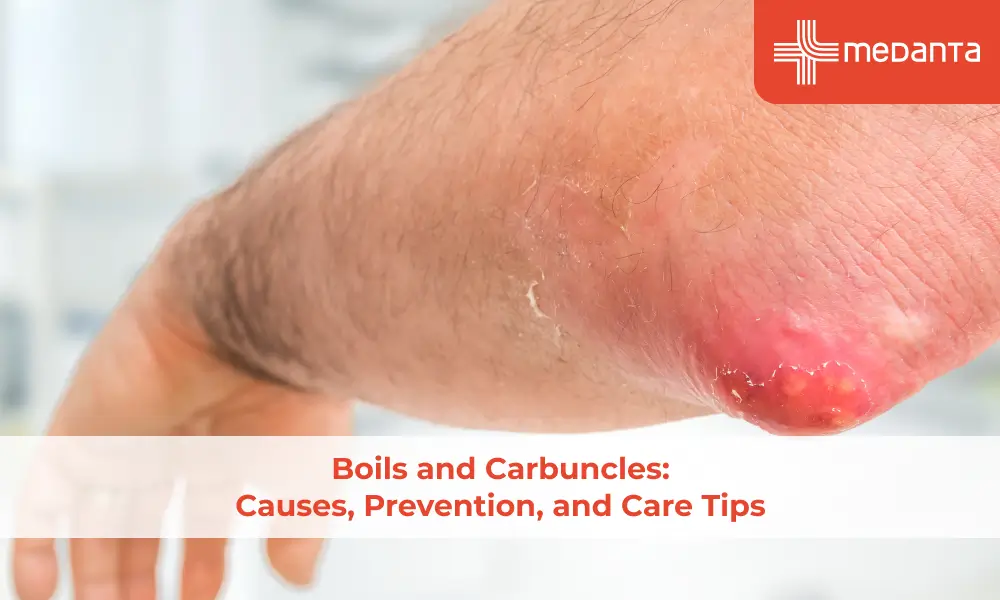Breast Tumor: Symptoms, Causes, And Treatment
A breast lump should not be ignored as it is a common sign of breast cancer. But take a sigh of relief as most types of breast lumps are noncancerous, especially in younger women. Research has indicated that 80 to 85 percent of breast lumps are benign. For this reason, don’t worry if you have breast lumps. You should, however, keep an eye out for any abrupt changes in the lumps and go for regular breast self-exams.
Breast cyst forms when there is a build-up of fluid. Sometimes they are so small that you can’t see them without breast imaging. But sometimes, they even grow quite large. Breast tumour is quite common during pregnancy due to clogged milk ducts. Menopause and birth control pills can also cause lumps in the breasts. A lump in a woman older than 40 is more likely to be cancerous. If the lump feels very hard and is larger than 2 cm, it is more likely to be a breast cancer lump, and you must visit your healthcare provider to access your condition.
Breast Tumour Symptoms
Look at the common breast tumour symptoms that indicate when you should see a healthcare provider.
- Bloody discharge from the nipple,
- Bruises on the breast without any apparent reason,
- A lump that doesn’t go away after menstruation,
- A change in how the nipple or breast looks and feels,
- Red skin on your nipple or breast,
- An inverted nipple, and
- A lump or mass that is very hard to touch.
Causes of Breast Tumour
These are the different causes of breast tumours that you must know about.
Fibrocystic changes- Changes in the breast are quite common during your menstrual cycle. These are called fibrocystic breast changes and mostly occur due to hormonal changes. You could get lumps in both breasts before your period. The lumps may even increase in size. You might even experience nipple discharge.
These breast lumps are basically milk ducts that grow and widen to form cysts. They enlarge due to the hormones that are released near your period. The breast lumps may be rubbery or hard. Fibrocystic changes can also thicken the breasts. Fibrocystic changes lead to benign breast lumps in women below 40 years. Postmenopausal women don’t experience these types of breast changes.
Traumatic fat necrosis- Traumatic fat necrosis is a benign lump that develops when there is a sudden injury to the breast. It develops from damaged breast tissues. When the breast tissue gets damaged, fat cells die and release oils that form small sacs called cysts. These cysts can harden and lead to the formation of scar tissue. You get one traumatic fat necrosis at a time.
Traumatic fat necrosis usually doesn’t need to be treated. But the doctor can remove it if the lump bothers you.
Simple Cysts- They are mostly benign and are filled with fluid. You could have one or many simple cysts. Their size and tenderness change with your menstrual cycle. Simple cysts can be treated with the help of fine needle aspiration. This is a non-surgical procedure wherein your doctor will insert a needle into the lump area. If the lump is a cyst, the doctor will suck out all the fluid, and the cyst will collapse.
Intraductal Papillomas- Intraductal Papillomas are benign tumours found in a milk duct in the breast. They are composed of fibrous tissue and blood vessels. The abnormal proliferation of epithelial cells leads to their growth. They are most seen in women between 30 to 50 and can be removed through surgery.
Signs A Lump May Be Cancer
There are a few signs and symptoms that indicate the lump may be breast cancer lump.
- A cancerous lump continues growing and doesn’t shrink easily.
- Breast cancer can begin in the armpit, any part of your breast, or up to your collarbone.
- The most common site for a breast lump is the upper outer quadrant that is closest to your armpit.
If you have a breast lump that fits these parameters, you must visit your doctor and get your breasts examined.
Treatment of Breast Lump
The treatment of breast lumps will depend on their severity and type. Some of the most common treatment options include-
- Fluid drainage for a painful or large breast cyst.
- Cancer therapies like radiation therapy, chemotherapy, mastectomy, and lumpectomy if the lump is cancerous.
- Excisional biopsy to remove a cyst that is painful, enlarging, or suspicious for cancer.
- In case of a breast infection, the doctor may recommend antibiotics.
- If you have developed a lump due to an injury, your healthcare provider may recommend you wait for some time and allow your breast to heal.
- Some types of breast lump, like fibroadenoma, don’t need to be treated or removed.
What To Expect When You Visit the Doctor
When you visit your doctor, they will ask you when you found the lump, how it feels, and any other symptoms. They will also ask about your family history of breast cancer. They will also physically examine your armpits and breasts to detect if the lump is cancerous or benign.
Depending on the initial findings, they may even ask you to get additional tests done to identify the cause and severity of the lump. These tests include-
Ultrasound- A non-invasive procedure wherein sound waves are used to analyze your breast.
Mammogram- These are the tests you might have to undergo for diagnostic purposes or breast cancer screening. It produces a clear X-ray image of your breasts and helps identify breast abnormalities.
Magnetic Resource Imaging- This test uses radio waves and a magnetic field to form pictures of your breast.
Biopsy- In this procedure, a biopsy needle is used to remove your breast tissue sample. The sample is examined under the microscope for breast cancer. There are different types of breast biopsy, including stereotactic, surgical, vacuum-assisted, and core needle.






